3 min read 🤓
"TRIO" for 3 piled baby grand piano's
(« Pile de Piano's »)
≥ october 17, 2020
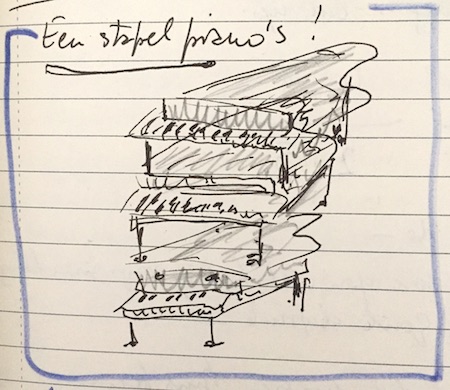
|
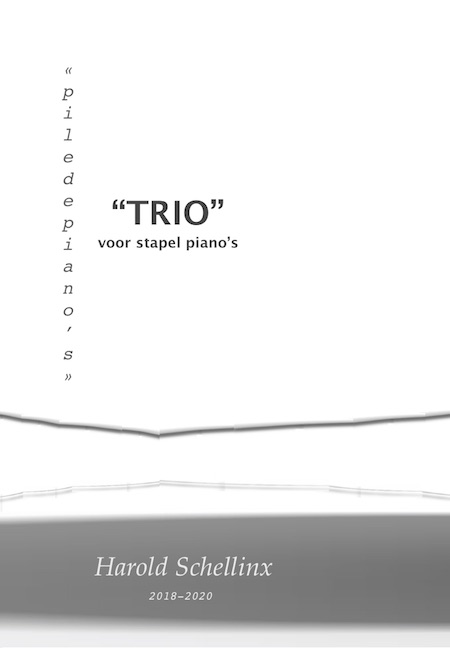
|
|
|
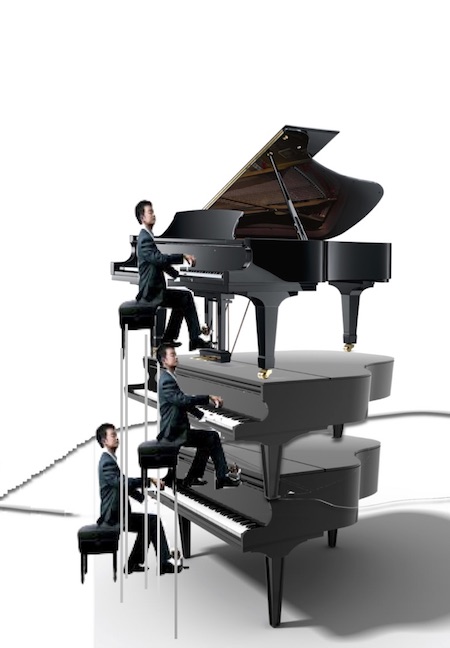
|
|
Recent creation, for art gallery: the three piled baby-grand piano's are played by three pianists seated on piano-stools that will be specially constructed, or adapted, to the necessary height. The piece has six parts, corresponding to the six possible permutations of the placement of the three stools. In each of the parts each of the players is assigned a range that is corrsponding to the placement of the pstool (low (L, 33/88 half tones)—middle (M, 35/88 half tones)—high (H 35/88 half tones)). The ranges L and M overlap by 7 half tones, M and H by 8 half tones (see the keyboard diagram below). Nouvelle création, pour galerie d'art: les trois pianos quart-de-queue empilés sont joués par trois pianistes assis sur des tabourets de piano spécialement construits ou adaptés à la hauteur nécessaire. La pièce comporte six parties, correspondant aux six permutations possibles de l'emplacement des trois tabourets. Dans chacune des parties, chaque joueur se voit attribuer une gamme qui correspond à l'emplacement de son tabouret. Les gammes L et M se chevauchent de 7 demi-tons, M et H de 8 demi-tons (voir le schéma du clavier ci-dessous). Nieuw stuk, voor kunstgalerie: de drie gestapelde salonvleugels [bedevaartspionnen] worden bespeeld door drie pianisten die op speciaal geconstrueerde of aangepaste pianokrukken zitten. Het stuk bestaat uit zes delen, die overeenkomen met de zes mogelijke permutaties van de plaatsing van de drie krukken. In elk van de delen krijgt elk van de spelers een bereik toegewezen dat overeenkomt met de plaats van de kruk. De bereiken L en M overlappen elkaar in 7 halve tonen, M en H in 8 halve tonen: |

|
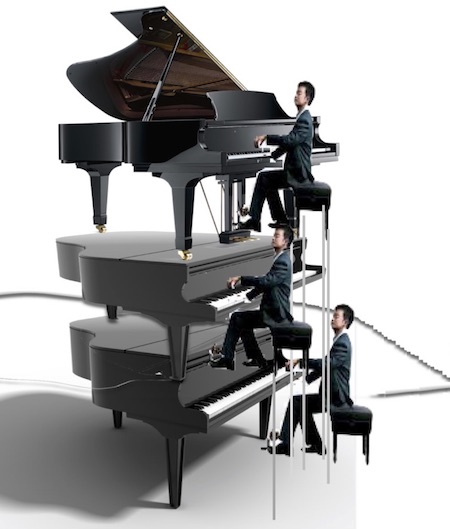
|
|
At the end of each of the first five pieces, two of the players and their stools will be ritually swapped ( * ), in order to install the stool-placement for the following part. In this process always one will stay fixed at the same spot, hence fix the range for that player as being the same as the one in the previous part. À la fin de chacune des cinq premières pièces, deux des joueurs et leurs tabourets seront rituellement échangés, afin d'installer le tabouret de la pièce suivante. Dans ce processus, l'un d'entre eux restera toujours au même endroit, ce qui signifie que la portée de ce joueur sera la même que celle de la partie précédente. Aan het einde van elk van de eerste vijf stukken worden twee van de spelers en hun krukken ritueel verwisseld, om de krukplaatsing voor het volgende deel te installeren. Hierbij blijft steeds één kruk op dezelfde plek staan, zodat het nieuwe bereik voor de betreffende speler gelijk zal aijn aan dat in het vorige deel. |
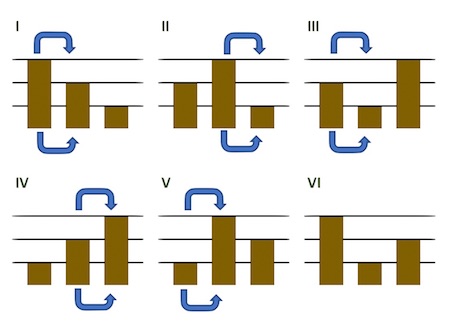
|
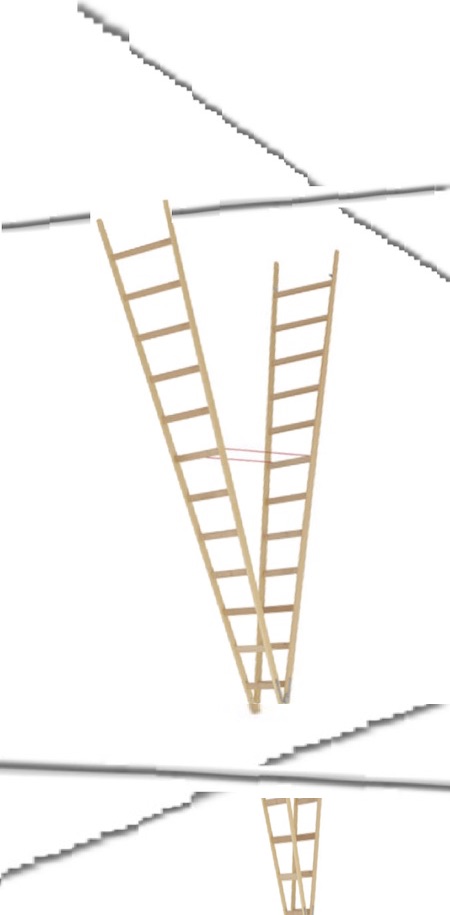
|
Next piece for piano's: 'Time-', for 12 upright piano's
notes __ ::
(*) Curiously, I realised only some time after having imagined this 'permuting', that this 'choreographed ritual' with a very large arc points back 36 years in time, when, in 1984 at the Utrecht Institute of Sonoly I composed a piece for 2 piano's, called Page 21, transcribing numerical output generated by Gottfried Michael Koenig's Project 1 program. The piece was performed on the 4th of December of 1984 during a series of concerts for elecronic music at the Utrecht Muziekcentrum Vredenburg by Agnès Benoist and Martijn Padding, and involved a simular 'ritual permutation' of the (two) players' placement with respect to the two piano's 😊 ... (as explained in the following page from my then introduction to score of the piece)
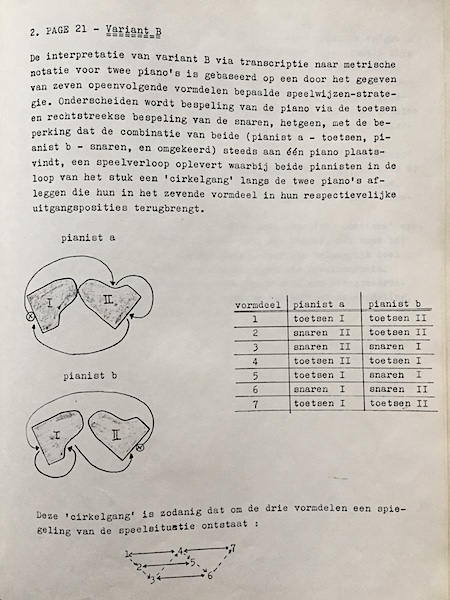 [
^ ]
[
^ ]
tags: Trio, piano, composition
# .499.